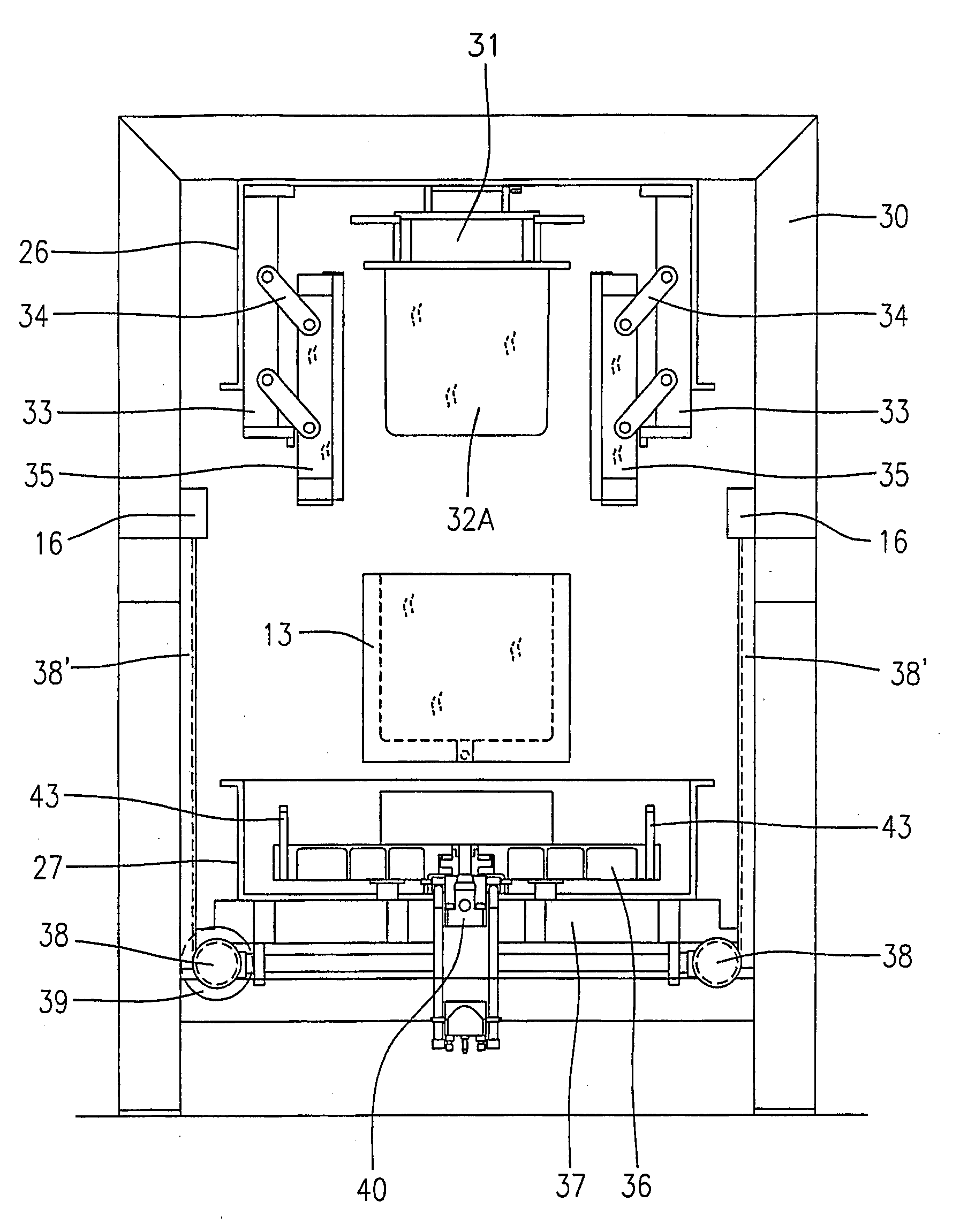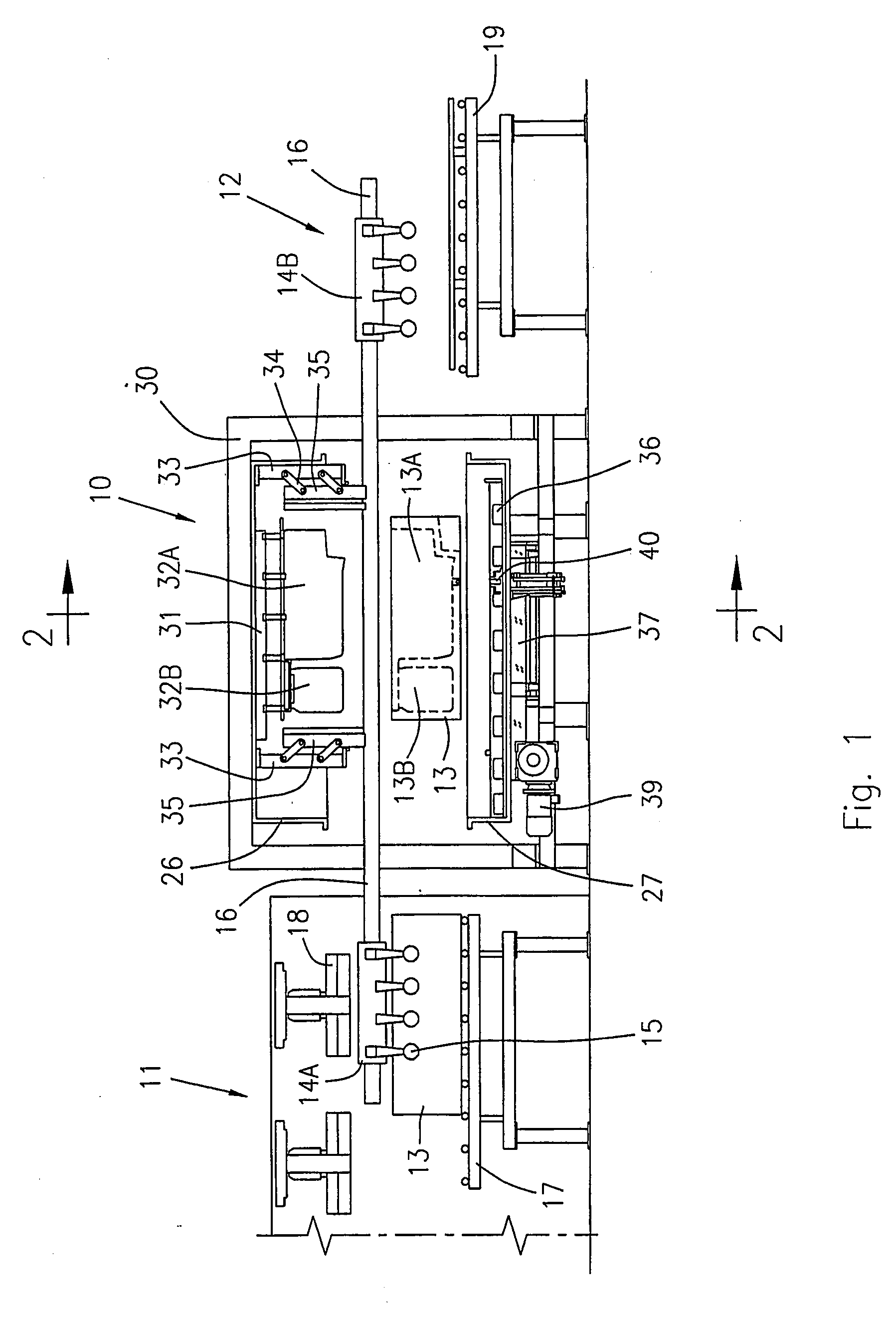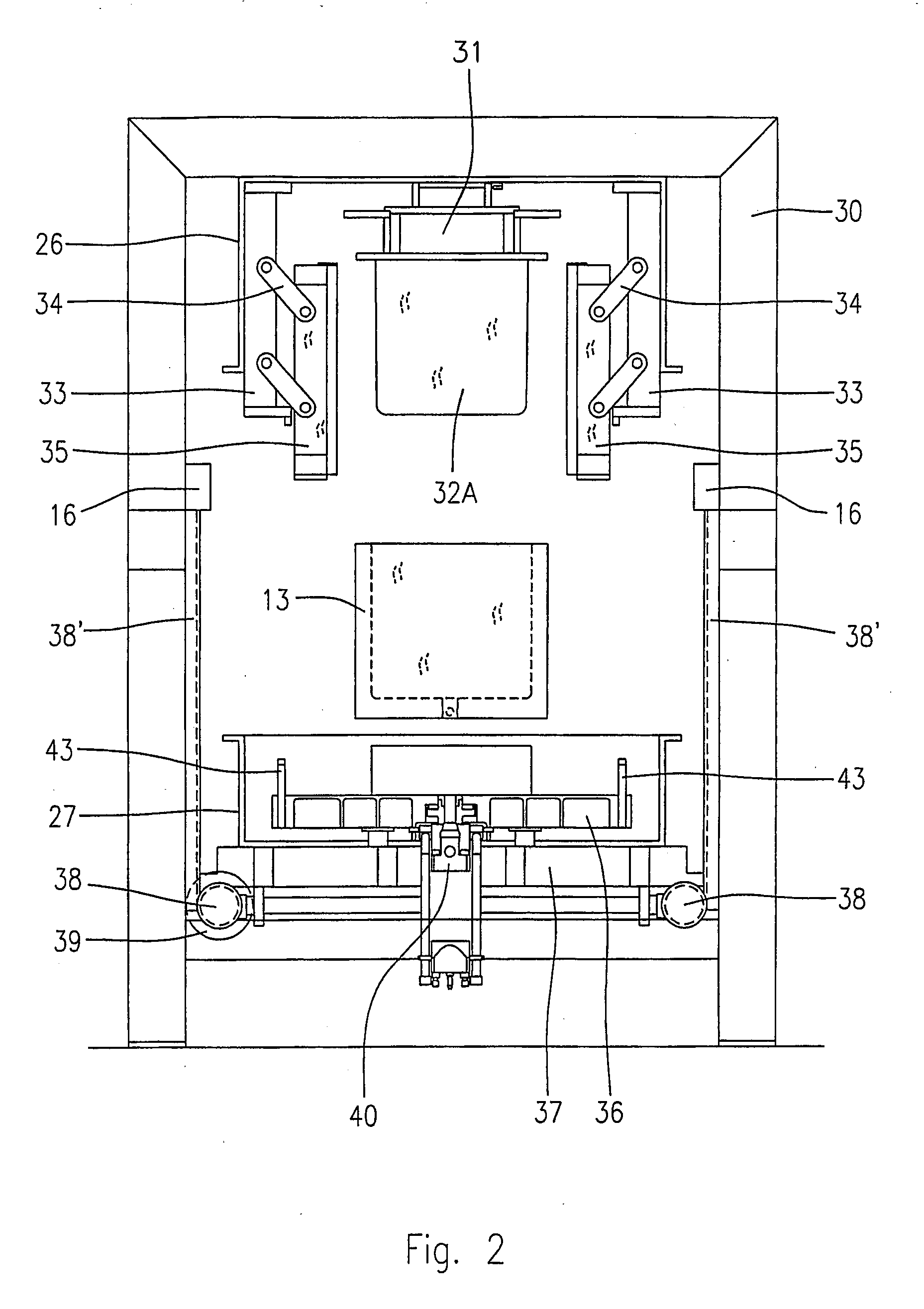Method and Apparatus for Vacuum Foaming Refrigerator Cabinets
a refrigerator cabinet and vacuum foaming technology, applied in the field of foaming, can solve the problems of faulty cabinets or moulded objects, not very suitable foaming refrigerator cabinets, large foaming moulds, etc., and achieve the effect of improving the foam distribution and reducing the length of the working cycl
- Summary
- Abstract
- Description
- Claims
- Application Information
AI Technical Summary
Benefits of technology
Problems solved by technology
Method used
Image
Examples
Embodiment Construction
[0031]FIG. 1 shows a foaming apparatus for refrigerator cabinets under vacuum conditions, according to a possible embodiment of the invention.
[0032]As shown, in its more general form, the apparatus comprises a preheating station 11 for preheating the refrigerator cabinets 13, axially aligned to a foaming station 10, followed by a receiving station 12 from where the foamed cabinets are transferred towards a final foam curing area.
[0033]The refrigerator cabinets 13 can be moved from the preheating station 11 to the foaming station 10, and from the latter to the receiving station 12 in any suitable way. For example, it is possible to contemplate the use of one or more trolleys 14 provided with gripping members 15, for example sets of suction cups capable of grasping the cabinet 13 on two sides, as shown; the trolleys 14 are appropriately controlled to run along guide rails 16 which extend longitudinally between the work stations 11, 10 and 12.
[0034]The preheating station 11 and receivi...
PUM
| Property | Measurement | Unit |
|---|---|---|
| gel time | aaaaa | aaaaa |
| thicknesses | aaaaa | aaaaa |
| vacuum | aaaaa | aaaaa |
Abstract
Description
Claims
Application Information
 Login to View More
Login to View More - R&D
- Intellectual Property
- Life Sciences
- Materials
- Tech Scout
- Unparalleled Data Quality
- Higher Quality Content
- 60% Fewer Hallucinations
Browse by: Latest US Patents, China's latest patents, Technical Efficacy Thesaurus, Application Domain, Technology Topic, Popular Technical Reports.
© 2025 PatSnap. All rights reserved.Legal|Privacy policy|Modern Slavery Act Transparency Statement|Sitemap|About US| Contact US: help@patsnap.com



